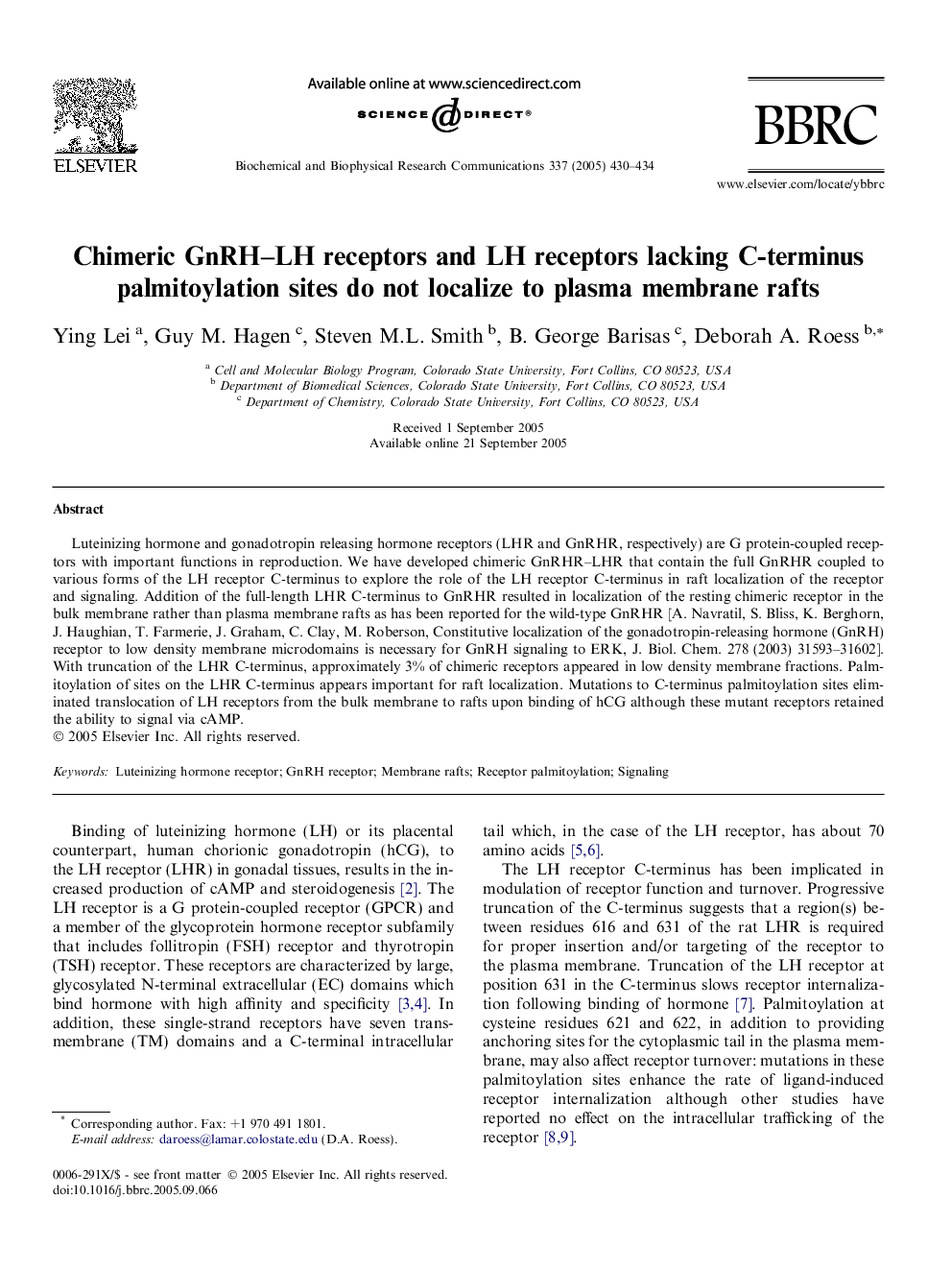| Article ID | Journal | Published Year | Pages | File Type |
|---|---|---|---|---|
| 10767803 | Biochemical and Biophysical Research Communications | 2005 | 5 Pages |
Abstract
Luteinizing hormone and gonadotropin releasing hormone receptors (LHR and GnRHR, respectively) are G protein-coupled receptors with important functions in reproduction. We have developed chimeric GnRHR-LHR that contain the full GnRHR coupled to various forms of the LH receptor C-terminus to explore the role of the LH receptor C-terminus in raft localization of the receptor and signaling. Addition of the full-length LHR C-terminus to GnRHR resulted in localization of the resting chimeric receptor in the bulk membrane rather than plasma membrane rafts as has been reported for the wild-type GnRHR [A. Navratil, S. Bliss, K. Berghorn, J. Haughian, T. Farmerie, J. Graham, C. Clay, M. Roberson, Constitutive localization of the gonadotropin-releasing hormone (GnRH) receptor to low density membrane microdomains is necessary for GnRH signaling to ERK, J. Biol. Chem. 278 (2003) 31593-31602]. With truncation of the LHR C-terminus, approximately 3% of chimeric receptors appeared in low density membrane fractions. Palmitoylation of sites on the LHR C-terminus appears important for raft localization. Mutations to C-terminus palmitoylation sites eliminated translocation of LH receptors from the bulk membrane to rafts upon binding of hCG although these mutant receptors retained the ability to signal via cAMP.
Related Topics
Life Sciences
Biochemistry, Genetics and Molecular Biology
Biochemistry
Authors
Ying Lei, Guy M. Hagen, Steven M.L. Smith, B. George Barisas, Deborah A. Roess,
